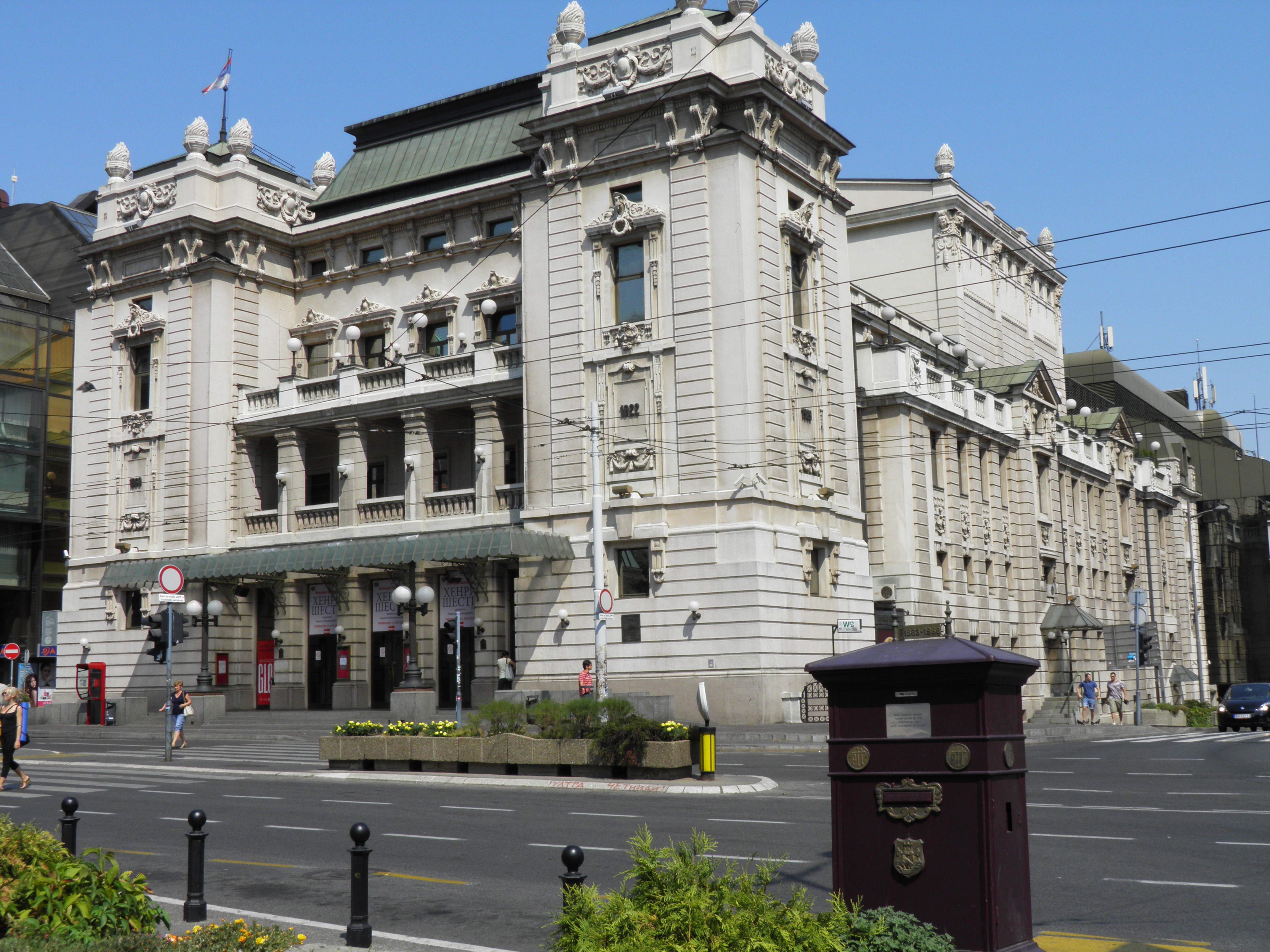While the Theatre building was being built near the Stambol Gate, the first performance was given on another location on Sunday, 22nd November 1868. It was a historic drama in five parts, Đurađ Branković by Karlo Obernik, translated and adapted by Jovan Đorđević, newly appointed manager of the Theatre. The performance was given in adapted room of inn Kod engleske kraljice (At the English Queen’s), a house the Theatre Board leased from Miloš Sušić, a priest in Saborna Church. The house was situated in 51 Kosmajska Street (today’s Milan Nedić Street, previously Marshal Biriuzov Street). Serbian Overture by Dragutin Reš was played before the performance and the opening speech on theatre art, literature and Serbian theatre was given by a writer Milorad Popović Šapčanin, future Prime Minister in the Serbian Government. The house that belonged to priest Sušić, which was situated in the vicinity of Varoš Gate, does not exist any more. There is no collective memory of it, although it was the venue of inception of one of the most important cultural institutions of Serbian Nation. Actors of the National Theatre gave seventy performances in Sušić’s house until May 1869. On 30th October, the new theatre season was opened in the new building with performance of After Death Fame of Prince Mihailo, by Đorđe Maletić, music was composed by Dragutin Reš, the Theatre’s composer. Plays were performed in the stone building near the Stambol Gate, near the Monument, on the Theatre Square, i.e. The Square of Republic, for almost a century and a half, with only short breaks due to wars and devastations. In 1920, the Theatre started producing operas and in 1923, the Theatre introduced full-length ballet productions. Of course, there are other significant dates in the National Theatre’s history.

National Theatre
- Address:
- Francuska 3, 11000 Belgrade
- GPS:
- 44.817019, 20.4611799372
- Telephone:
- +381 11 32-81-333
- Email:
- uprava@narodnopozoriste.rs
- Web:
- http://www.narodnopozoriste.co.rs/
- Hours Open:
- Monday:
- 11:00 - 15:00 ; 17:00 - 21:00
- Tuesday:
- 11:00 - 15:00 ; 17:00 - 21:00
- Wednesday:
- 11:00 - 15:00 ; 17:00 - 21:00
- Thursday:
- 11:00 - 15:00 ; 17:00 - 21:00
- Friday:
- 11:00 - 15:00 ; 17:00 - 21:00
- Saturday:
- 11:00 - 15:00 ; 17:00 - 21:00
- Sunday:
- 17:00 - 21:00

